I have little doubt that most of us have seen pictures of the spectacular golden mosaics in the Hagia Sophia that depict Alexandros I, John II Komnenos, his wife Eirene, their son Alexios, Zoe, Constantine IX Monomakhos, Gabriel, John the Baptist, Jesus, and Mary. If you have not seen them, check them out: Hagia Sophia – Wikimedia Commons. You can also read about the Leo mosaic on one of my other on Leo and the narthex mosaic entitled “Quadrigamy and Art History’, which I will not link to due to incompetence in running the WordPress software. However, there are other mosaics that are not visible to most visitors. Besides the rumors (and Fossati drawings) of a large John V Palaiologos mosaic still covered up near the apse, there is a set of mosaics in the rooms above the southwest ramp and vestibule. I do not have pictures of them all here, and there seems to be at least one large and fairly intact Pantokrator mosaic there that I cannot find a decent picture of. There are numerous fragments in those rooms, but this is all I could find for decent colour photographs.
The rooms in question were likely built shortly after the construction of the cathedral, but after Justinian. Academic opinion (Cormack and Hawkins) believe that the rooms date to the later sixth century. They likely served as a sekreton (council hall) for the patriarchate, and seem to be sizable rooms. The mosaics date from later. A recent work has argued that the medallion with the cross (the last picture) dates from the reign of Constantine V. There were earlier mosaics present, although they appear to have been removed sometime earlier in the eighth century during iconoclasm. This is one of the (admittely few) cases where corroborating evidence actually reveals Theophanes to be correct, for he states that the patriarch Niketas removed the images in the “small sekreton of the patriarchate”, which was likely this room.
I do not have solid dates for any of these, but they must be at least from the middle of the ninth century, for they almost certainly required an iconodoule patriarch. Additionally, the second figure portrayed is the Patriarch Nikephoros, which also suggests that the mosaics date after the end of iconoclasm, for not only would it have been extremely presumtuous for Nikephoros to put up a mosaic of himself while he was patriarch (806-815), he acquired a reputation of a remarkable iconodoule due to his excommunication at the synod of 815 that began Second Iconoclasm.
Running in order from top to bottom: Mary, Nikephoros I of Constantinople, Simon Zealotes, St. Constantine, medallions in the south tympanum.

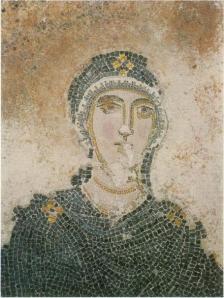
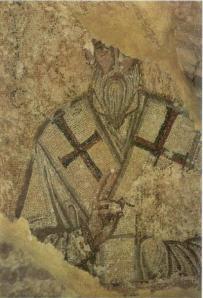
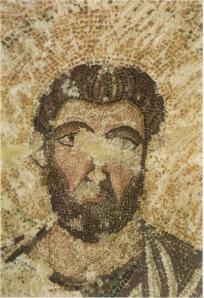
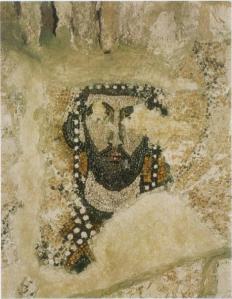
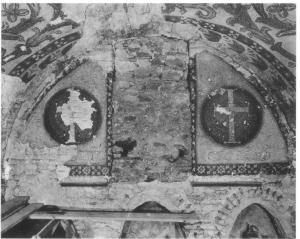
Δεν υπάρχουν σχόλια:
Δημοσίευση σχολίου